- Home
- Barbara W. Tuchman
First Salute Page 2
First Salute Read online
Page 2
Cadwallader Colden, British Lieutenant-Governor of New York, had warned London in November, 1774, that “contraband between this place and Holland prevails to an enormous degree.… Action must be taken against the smugglers but it would not be easy because the vessels from Holland or St. Eustatia do not come into this port, but in the numerous bays and creeks that our coast and rivers furnish, from whence the contraband goods are sent up in small boats.”
How the system of contraband delivery worked was revealed in the reports of Yorke’s network of agents. A particularly active shipper was shown to be a certain Isaac Van Dam, a Dutch resident of St. Eustatius serving as middleman for the Americans, who was sending quantities of goods and money to France for the purchase of gunpowder to be delivered to St. Eustatius for transshipment to America. For Britain’s envoy to see the contraband go forth under his nose was particularly painful. “All our boasted empire of the sea is of no consequence,” lamented Sir Joseph Yorke. “We may seize the shells but our neighbors will get the oysters.”
Exasperated by the traffic, Britain in 1774 declared the export of “warlike stores” to the Colonies to be contraband and therefore subject to search and seizure under her rights as a belligerent. Threats to the Dutch government followed, demanding prohibition of the military shipments by Dutch subjects. These were no longer the days of a century before when, in the series of struggles between the Dutch and English for maritime supremacy, Holland’s Admiral de Ruyter, according to legend, had sailed up the Thames to the very gates of the enemy capital with a broom nailed to his masthead in token of his intent to sweep the English from the Channel. Failing that happy result, he burned English ships and towed away the Royal Charles, one of the principal ships of the Royal Navy, an ill event that brought anguish to Samuel Pepys, a secretary of the Admiralty. “My mind is so sad,” he recorded in his diary for June 12, 1667, “and head full of this ill news … for the Dutch have broke the chain and burned our ships, particularly the Royal Charles, and the truth is I fear so much that the whole kingdom is undone.” The blaze of the ships burning in the river was seen in London. The Anglo-Dutch wars, however, merely continued indecisively through the 17th century until both countries concluded that contest for supremacy was costing more than any profit supremacy could bring, and since both were strained in their resistance to the aggressions of Louis XIV, King of France, they found a joint interest in combining against him instead of fighting each other. In 1678, England and Holland* had entered into defensive alliance pinned to several treaties requiring each to assist the other with the loan of troops or other aid in the event of aggression by a third power. After nearly a hundred years of this relationship, England took it very ill that Holland, instead of lending her 6,000 troops upon request under the terms of the old treaty, was instead saving the American enemy from empty arsenals and enabling the Revolution to continue.
Conscious of naval weakness relative to Britain, which now in the 1770s had 100 ships of the line (warships of over 60 guns), compared to eleven of the same size for the Netherlands, the government of the Netherlands felt compelled to comply with Britain’s demand to cease supply of war material to the Colonies. In March, 1775, Dutch rulers announced to their subjects a six months’ embargo of export to the Colonies of contraband (arms and ammunition) and naval stores (lumber for repairs, ropes for rigging and all materials needed to keep a ship afloat), even clothing, under penalty of confiscation of cargoes and heavy fines, and confiscation of ships in case of non-payment. In August the prohibition was extended from six months to a year, and again prolonged for each of the next two years. As an unbearable restraint on a lucrative trade, the order aroused wrathful resentment in the merchant class and was routinely disobeyed. The natural result was a great increase in smuggling, to such an extent that Sir Joseph Yorke was instructed to inform the States General, governing body of the Netherlands, that English warships were ordered henceforth to show “more vigilance and less reserve” in their attentions to St. Eustatius. Their guard became so close as to make it difficult for mariners to bring in provisions. Indignation at this treatment provoked in Holland a proposal to blockade the ambassadorial residence of Sir Joseph Yorke in retaliation, though the records show no evidence that this undiplomatic enterprise was carried out. In January of 1776, King George III ordered the Admiralty to put more warships on duty because “every intelligence confirms that principally St. Eustatius, but also all the other islands are to furnish the Americans with gunpowder this winter.” If Eustatian shippers had not been indefatigable in defying the embargo and evading their pursuers, continuance of the American rebellion at this stage might have been a close call. Militarily it was a hardpressed time. A crushing defeat in the Battle of Long Island in August, 1776, had left the British in control of access to New York and the New York coast. Washington had, at least, safely brought his forces out of Manhattan, where he could maintain the connection of New England to the South which it was the principal British strategic aim to disrupt. Soon the British had penetrated Pennsylvania and were threatening Philadelphia, the congressional capital. At Christmas time of 1776 the Continental Congress fled to Baltimore. In September, 1777, Sir William Howe with a large army and naval force sailed imposingly up Chesapeake Bay to the Delaware to enter and occupy Philadelphia, the largest city and busiest manufacturing and commercial center of the country. Occupation by the British meant the closing of America’s two major ports by the enemy, cutting off the delivery of cargoes. The Dutch, however, not disposed to abandon a lucrative trade, slipped into smaller ports and estuaries and managed to maintain the supply of guns and powder that kept the patriot fight for independence alive.
The cause, however, suffered another blow in the loss of Fort Washington, on Harlem Heights, opposite Fort Lee in New Jersey, thereby losing control of the Hudson and opening New Jersey across the river to invasion by the British. The new defeat called for heavy campaigning to save the territory. The bedraggled army, without proper clothing and short of medicine and hospitals and care for the wounded, and especially of fresh recruits, was further weakened by the constant drain of short enlistments. Washington could muster perhaps 2,500 men at the most against Howe’s 10,000. The imbalance was made up by his gift for miracle in a crisis. On the same Christmas when the Congressmen were running to save their skins, Washington with his worn-out force crossed back over the Delaware to inflict a smashing knockout on the Hessians at Trenton, gaining their surrender and 1,000 prisoners. For his own cause, the gift in energy and morale was incomparable.
A similar indomitable will had already carried the Dutch people through an eighty years’ war of rebellion to overthrow Spanish sovereignty and brought them by their seafaring enterprise to overseas empire and to a role in the 17th century equal to that of the great powers. Though now slipping into decline, they were not disposed to acquiesce readily in British dictation of what their ships could or could not carry or to submit to search and seizure on command.
Mutual hostility between Dutch and English was to mount to a climax in the five years following the salute to the Andrew Doria with definitive effect on America’s fortunes. In January, 1776, the hostility became overt. In strong language voiced by Abraham Heyliger, the temporary Governor, Eustatians vehemently protested that the British, in pursuing merchantmen into their harbor, committed “irregularities so flagrant that they must be considered as a total violation of the laws of all civilized nations.” The protest was—with more caution than the original version—addressed not directly to the British, but to the West India Company in Amsterdam, which governed the trade with America. Admiral James Young, commanding the British Leeward station, shot back at once a denunciation of “the very pernicious traffic carried on between his Britannic majesty’s rebellious subjects … and … St. Eustatias.” King George’s order to the Admiralty to show “more vigilance” followed in the same month.
Now become illicit under the embargo, the arms traffic to the Colonies could continue from St. Eus
tatius only with benevolent observation by the island authorities—in particular, the Governor. Ironically, Johannes de Graaff obtained that post as the result of another British protest, which had demanded replacement of his predecessor, Governor De Windt, as being too favorable to the American cause and too lax in preventing the smuggling of contraband. When De Windt conveniently died in 1775, Holland, without appearing to submit to a foreign demand, appointed de Graaff, secretary of the island administration for 24 years, to take his place.
Among the many applicants to the West India Company for the post of governor, de Graaff was seen as everyone’s competitor. Some made a point of his strong qualifications, others of his disqualifications, including the complaint of a citizen that his wife was as “stingy as sin. She served us food that was three days old,” and what was worse, “where do you think her tablecloths came from? From Osnabrück! Have you ever seen decent people use them? Let alone common folk like them?” Despite this mysterious local dereliction, de Graaff was appointed. Born in St. Eustatius to wealthy parents in 1729, in the same decade as Sam Adams, and educated in the Netherlands, he had returned to St. Eustatius, married the daughter of the then Governor, Abraham Heyliger, rose to be commander of neighboring St. Maarten and, after serving as secretary to the administration of his home island, succeeded to his father-in-law’s former post as governor. He was sworn in on September 5, 1776, giving him nine weeks in office before he precipitated the Andrew Doria crisis. He was said to be the richest merchant and planter on the island, owning a quarter of the privately owned land with 300 slaves, and inhabiting a splendid home built as a showplace fifty years before by the wealthiest merchant of that time. De Graaff had furnished the spacious rooms with the same pewter and Delft porcelain and polished mahogany that adorned the homes of the rich Regents of Amsterdam. In addition, he was alleged to own sixteen vessels trading between Europe and St. Eustatius. From the second-story balcony of his house he could watch the crowded company of ships entering and leaving the harbor with the cargoes that earned him a rumored income of $30,000 a year. According to complaints from fellow-residents, he held many mortgages, being thus in a position to keep many people dependent on him, the more so as he put friends and relatives in administrative office so that he entirely controlled the five-man assembly or Council of St. Eustatius. Members of the Council were prosperous merchants and farmers of his own kind, as were most of the members of the church consistory; together they formed a body that managed the government and administration of justice in support of their own interests, in a manner not unknown elsewhere. Local complaints which charged the Governor with acting arbitrarily suggest an autocrat and make it quite clear that de Graaff was not a nominal or absentee governor, but fully aware and in control of all activities on his island.
If the British expected him to put guards on the port to suppress the smuggling trade, any such hope was disappointed. He proved to be even more of a partisan of the American cause than his predecessor. The port is “opened without reserve to all American vessels,” protested Captain Colpoys, an English sea captain commanding the Seaford anchored off St. Kitts, the neighboring British island, while the American agent in St. Eustatius, Van Bibber of Maryland, wrote home, “I am on the best terms with H.E. the Governour.… Our Flag flys current every day in the road.… The Governour is daily expressing the greatest desire and intention to protect a trade with us here.” The Dutch West India Company, which employed the Governor, could hardly have been ignorant of these sentiments, and, being eager to augment its revenues from the American trade, doubtless had appointed him because of them.
His domain—little St. Eustatius, or Statia, as it was familiarly called in the region—has a number of distinctive qualities, not the least of which is that the authorities seem not quite sure where it is. In histories and atlases and in 18th century usage it is always named one of the Leeward Islands, whereas a modern brochure published by the local official tourist bureau places it among the Windward Islands. To the average reader, likely to be a landlubber like the author, this odd contradiction may be a matter of indifference, but in the days of sail it lay at the heart of the matter. “Leeward,” meaning the direction toward which the wind blows, hence generally toward the shore, and “windward,” meaning the direction from which the wind comes to fill the sails, represent the absolute polarity and determinant of maritime activity, as distinct from each other as inside from outside. For a place that was once the wealthiest port of the Caribbean and played a crucial role in American history, this uncertainty about nomenclature seems a bit casual, not to say careless. Regardless of such confusions as may have slipped into print, St. Eustatius may confidently be stated, along with the Virgin Islands, to belong to the Leeward group of the Lesser Antilles.
The West Indies as a whole make up a curved chain connecting North and South America, from a point off Florida down to Venezuela, which lies on the north coast of South America, the coast known in the days of piracy as the Spanish Main. Here pirates lay in wait in ports of the mainland to raid Spanish treasure ships heading home loaded with the silver of Peru and the goods and riches of the Spanish Colonies of the New World.
Separating the Atlantic from the Caribbean, the chain of the West Indies protrudes on its outer curve into the Atlantic and on its inner curve encloses the Caribbean as in a bowl. Tree-covered humps of land, each wearing around its base a white-fringed skirt of waves breaking on the shore, the islands of the West Indies lie comfortably in an unthreatening sea under a wide coverlet of quiet sky. Changing from slate blue when under cloud cover to turquoise in the sun, the sea twinkled with little white-caps while it bore flotillas of sail coming to unload produce or pick up cargoes at the island ports, or perhaps to disembark troops of a hostile invasion with intention to seize and occupy an island for attachment to the invader’s own nation. This happened regularly, causing changes of sovereignty with hardly more excitement than when a man changes his clothes. Because of their wealth in the flow of international trade, lifeblood of the 18th century, and from the new crop of sugar sweetening the tongue of Europe and from the slave trade bringing labor to do the hot and heavy work on the sugar plantations, the islands were prizes for any nation greedy for the hard currency believed at that time to be the stuff of power. Apart from actual seizure, invaders could devastate the plantations, reduce product, cut revenue to the sovereign nation and thereby reduce its war-making capacity. St. Eustatius, the most lucrative island, boasted twenty-two changes of sovereignty in little more than a century and a half.
Within the Caribbean bowl, the islands lie in three groups, with the Bahamas at the top, followed at the center by a group of the largest islands, comprising Cuba, Jamaica, Puerto Rico and the divided island of Haiti-Santo Domingo. At the eastern edge is the thin vertical chain of the Leeward Islands where Statia was located, with British-owned St. Kitts as its nearest neighbor, eight miles distant. Further into the ocean, the Windward Islands, including Martinique, Barbados and Grenada, and Trinidad and Tobago, hold the windward position. Home base in Europe was far away, an average distance, depending on the port of destination, of about 4,000 miles, and an average sailing time from the West Indies to Europe with the push of the prevailing westerly wind (blowing from west to east) of five or six weeks. The coast of North America lay much closer, some 1,400 miles across the Caribbean and South Atlantic. The typical voyage from the Indies to America took an average of three weeks. Enough geography.
De Graaff’s salute of the rebels, and his countrymen’s defiance of the embargo risking retaliation by a greater power, raises the question of motive. In all this affair the primary Dutch interest was a profitable commerce rather than liberty. De Graaff was not intending a mere routine ritual, as he later pretended when under investigation, but a deliberate one. In the subsequent furor, the Commander of Fort Orange, Abraham Ravené, testified that he had been reluctant to respond to the Andrew Doria but the Governor at his elbow ordered it. The applause of the island’s inhabitants
tells why. It confirmed to them that their new governor was not going to enforce the prohibition of trade in contraband or cut off the wealth that trade engendered.
Statia rejoiced. After the salute, as the Maryland agent reported, Captain Robinson of the Andrew Doria was “most graciously received by his Honour and all ranks of people … all American vessels here now wear the Congress coulours. Tories sneak and shrink before the Americans here.” Because de Graaff’s interests lay with the Company and the merchant class, the first salute was clearly intended to assure the unruly Eustatians of the benevolent eye they needed to pursue their profits. For added emphasis, de Graaff gave a party after the salute in honor of Captain Robinson, inviting all American agents and merchants to the entertainment, as Van Bibber happily reported to his principals in Maryland. Confirming the motive behind the salute, Van Bibber also wrote, “The Dutch understand quite well that enforcement of the laws, that is, the embargo, would mean the ruin of their trade.”

 Practicing History: Selected Essays
Practicing History: Selected Essays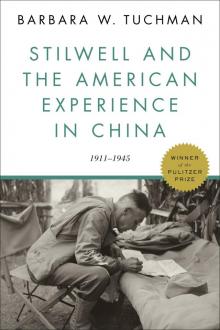 Stilwell and the American Experience in China, 1911-45
Stilwell and the American Experience in China, 1911-45 Bible and Sword: England and Palestine From the Bronze Age to Balfour
Bible and Sword: England and Palestine From the Bronze Age to Balfour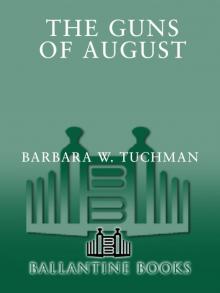 The Guns of August
The Guns of August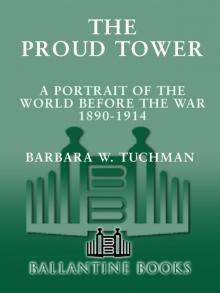 The Proud Tower: A Portrait of the World Before the War, 1890-1914
The Proud Tower: A Portrait of the World Before the War, 1890-1914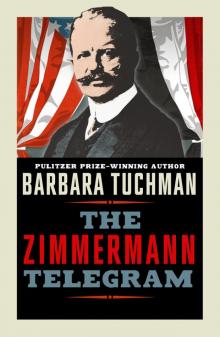 The Zimmermann Telegram
The Zimmermann Telegram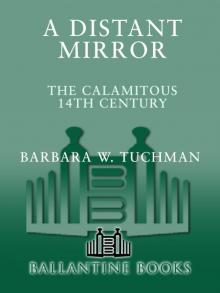 A Distant Mirror: The Calamitous 14th Century
A Distant Mirror: The Calamitous 14th Century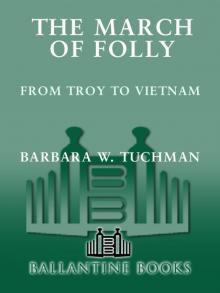 The March of Folly: From Troy to Vietnam
The March of Folly: From Troy to Vietnam The First Salute
The First Salute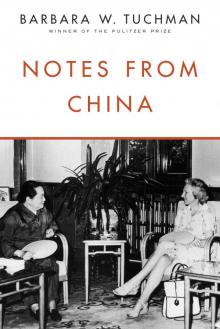 Notes From China
Notes From China Practicing History
Practicing History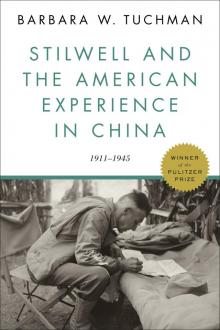 Stilwell and the American Experience in China
Stilwell and the American Experience in China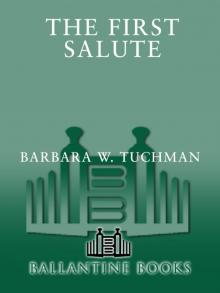 First Salute
First Salute Bible and Sword
Bible and Sword